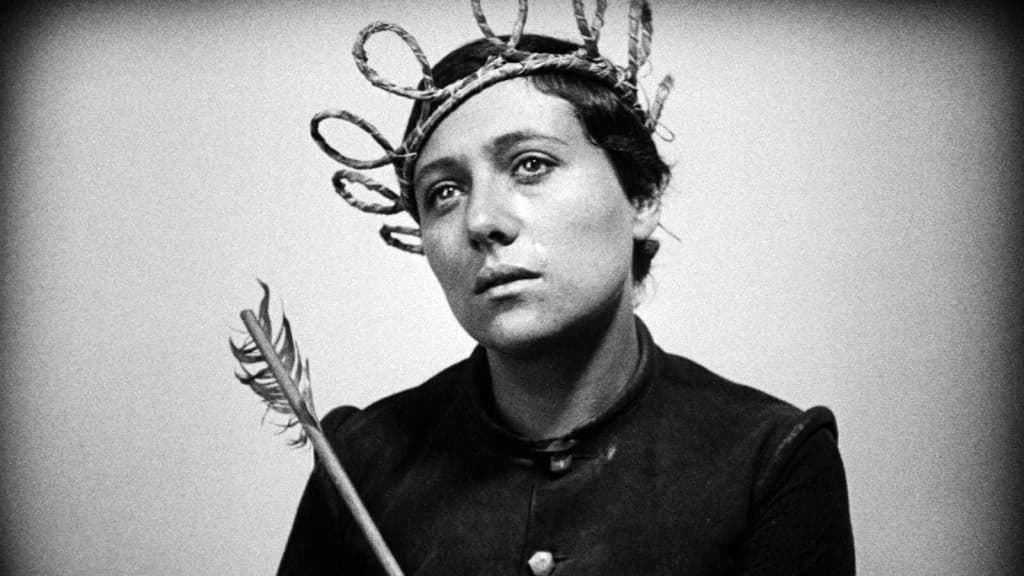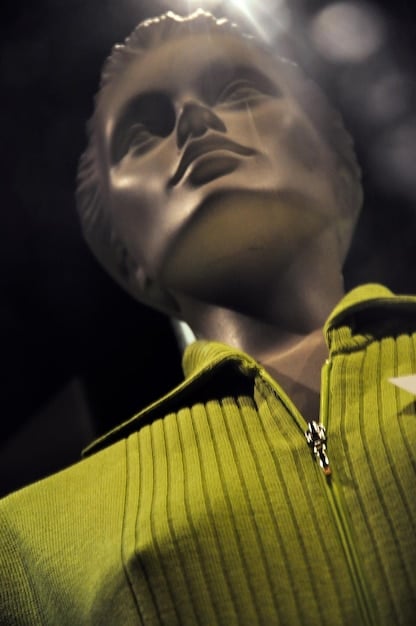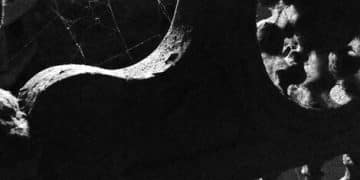Why “The Passion of Joan of Arc” Remains a Cinematic Masterpiece

Director Carl Theodor Dreyer’s 1928 silent film, The Passion of Joan of Arc, continues to be celebrated for its revolutionary use of close-ups, stark set design, and the emotionally raw performance of Renée Falconetti, making it a timeless exploration of faith, persecution, and human resilience.
Carl Theodor Dreyer’s 1928 film, The Passion of Joan of Arc, isn’t just a piece of history; it’s a visceral experience that continues to resonate with audiences nearly a century later. But why does this silent film, with its stark visuals and minimalist sets, still hold such power and influence in the world of cinema?
The Unforgettable Performance of Renée Falconetti
One of the primary reasons why The Passion of Joan of Arc endures is the legendary performance of Renée Falconetti in the title role. Her portrayal of Joan is not merely an acting performance; it’s a profound and deeply moving embodiment of the saint’s suffering and unwavering faith.
A Face of Martyrdom
Dreyer famously used almost exclusively close-ups throughout the film, forcing the audience to confront Falconetti’s face and, by extension, Joan’s pain directly. This was a revolutionary technique for the time, foregoing elaborate sets and costumes in favor of intimate emotional expression.
Falconetti’s Dedication
Falconetti’s commitment to the role was extraordinary. She reportedly endured genuine discomfort and emotional stress during filming, which Dreyer encouraged to elicit authentic reactions. This dedication, bordering on method acting before its time, contributed to the film’s raw power.
- Authenticity: Falconetti’s performance feels deeply authentic, avoiding theatrical exaggeration in favor of subtle, nuanced expressions.
- Vulnerability: She portrays Joan’s vulnerability and fear alongside her unwavering faith, creating a complex and relatable character.
- Iconic Status: Falconetti’s face has become synonymous with Joan of Arc, solidifying her place in cinematic history.
Falconetti’s Joan is not a saintly figure devoid of human emotion, but a young woman facing unimaginable pressure and cruelty. Her tears, her quiet defiance, and her ultimate acceptance of her fate are what make her performance so unforgettable.
Dreyer’s Revolutionary Cinematography
Carl Theodor Dreyer’s innovative filmmaking techniques are another pivotal reason why The Passion of Joan of Arc continues to be studied and admired. He stripped away the conventions of traditional filmmaking to create a uniquely immersive and emotionally impactful experience.
Close-Ups as Storytelling
The film’s most distinctive feature is its extensive use of close-ups. By focusing on the faces of Joan and her tormentors, Dreyer eliminates distractions and forces the audience to confront the emotions playing out on screen.
Minimalist Set Design
The stark, minimalist set design further enhances the film’s emotional intensity. The absence of elaborate backdrops and props directs attention solely to the characters and their interactions.
Dynamic Camera Angles
Dreyer employed unusual camera angles, often shooting from below to emphasize the power and authority of Joan’s inquisitors, or from above to convey her vulnerability and isolation.

Dreyer’s choices weren’t arbitrary; they were deliberate attempts to heighten the film’s emotional impact and create a visceral connection with the audience. He proved that powerful storytelling could be achieved through simplicity and emotional honesty.
Themes of Faith and Persecution
Beyond its technical achievements, The Passion of Joan of Arc explores universal themes of faith, persecution, and the individual’s struggle against oppressive forces. These themes resonate across cultures and time periods, contributing to the film’s enduring relevance. Why do these themes have such a strong impact?
The Power of Belief
Joan’s unwavering faith in the face of relentless pressure speaks to the power of belief and the human spirit’s capacity to endure even the most brutal circumstances. Her conviction inspires awe and admiration.
Injustice and Authority
The film vividly portrays the injustice of Joan’s trial and the abuse of power by religious and political authorities. This critique of institutional corruption remains relevant in contemporary society.
Martyrdom and Sacrifice
Joan’s ultimate sacrifice for her beliefs elevates her to a level of martyrdom, making her a symbol of resistance against tyranny. Her story serves as a reminder of the importance of standing up for one’s convictions, even in the face of death.
The film’s exploration of these timeless themes ensures that it will continue to resonate with audiences seeking meaning and inspiration in the face of adversity. It’s a powerful testament to the enduring strength of the human spirit.
The Absence of Music and Sound
Paradoxically, the absence of a traditional musical score in many versions of The Passion of Joan of Arc amplifies its emotional impact. The silence allows the audience to focus entirely on the visuals and the characters’ inner turmoil and begs the question, why no music?
Silence as a Tool
The silence creates a sense of stark realism, mirroring the desolate and oppressive atmosphere of Joan’s imprisonment and trial. It also forces the audience to actively engage with the film’s emotions, rather than passively absorbing them through a musical score.
Heightened Sensory Experience
The lack of music heightens the other sensory elements of the film, such as the sound of shuffling feet, the rustling of robes, and the characters’ anguished cries. These sounds become amplified, adding to the film’s sense of immediacy.
Contemporary Scores
While the original film was silent, many contemporary composers have created scores for it, offering new interpretations and enhancing its emotional resonance for modern audiences. These scores, however, are often minimalist and atmospheric, respecting the film’s inherent power.
The absence of traditional music is a bold choice that ultimately contributes to the film’s unique and unforgettable impact. It’s a testament to Dreyer’s confidence in his visual storytelling and his understanding of the power of silence.
Its Influence on Modern Cinema
The Passion of Joan of Arc has had a profound and lasting influence on modern cinema, inspiring countless filmmakers with its innovative techniques and its emotionally resonant storytelling. Its impact can be seen in everything from independent art films to Hollywood blockbusters.
Visual Storytelling
Dreyer’s emphasis on visual storytelling, particularly his use of close-ups and minimalist set design, has become a staple of modern filmmaking. Many directors have emulated his approach to create intimate and emotionally powerful scenes.
Performance and Realism
Falconetti’s performance has set a new standard for realistic and emotionally honest acting. Her influence can be seen in the work of numerous actors who have strived to achieve a similar level of authenticity.
Themes and Tone
The film’s themes of faith, persecution, and the individual’s struggle against oppressive forces continue to inspire filmmakers to explore complex and challenging subjects. Its somber and contemplative tone has also influenced a wide range of films.

From its visual style to its thematic depth, The Passion of Joan of Arc has left an indelible mark on the world of cinema. It remains a touchstone for filmmakers seeking to create meaningful and emotionally resonant works.
Restoration and Preservation Efforts
The survival and continued availability of The Passion of Joan of Arc is due in large part to the tireless efforts of film archivists and restorers who have worked to preserve this cinematic masterpiece for future generations. It is important to understand why this is such an important endeavor.
Lost and Found
The film has a complicated history, with the original negative believed to have been destroyed shortly after its creation. Over the years, various versions of the film have surfaced, each with its own unique characteristics.
Restoration Projects
Multiple restoration projects have been undertaken to reconstruct the film as closely as possible to Dreyer’s original vision. These projects have involved painstaking research, careful analysis of existing prints, and the use of advanced digital technology.
Preservation for the Future
Thanks to these efforts, The Passion of Joan of Arc is now widely available in high-quality versions, ensuring that it will continue to be seen and appreciated by audiences for years to come.
The preservation of The Passion of Joan of Arc is a testament to the importance of film archiving and restoration. It ensures that future generations will have the opportunity to experience this powerful and influential work of art.
| Key Aspect | Brief Description |
|---|---|
| 🎬 Falconetti’s Performance | Raw, authentic portrayal of Joan’s suffering. |
| 🎥 Dreyer’s Cinematography | Innovative use of close-ups and minimalist sets. |
| ✝️ Faith and Persecution | Explores universal themes of belief and injustice. |
| 🎞️ Restoration Efforts | Preservation ensures future generations can experience it. |
Frequently Asked Questions
▼
Falconetti’s portrayal is lauded for its raw authenticity and emotional depth. She fully embodies Joan’s suffering, making the performance deeply moving and unforgettable; Falconetti’s dedication during filming was exceptional.
▼
Dreyer’s extensive use of close-ups eliminated distractions and forced audiences to confront the emotions on screen directly. This technique created a visceral connection between the viewer and Joan’s internal struggles.
▼
The film primarily explores themes of unwavering faith, unjust persecution, and the individual’s fight against oppressive authority. These themes resonate across cultures and time, adding to the film’s lasting impact.
▼
The absence of a traditional music score amplifies the film’s emotional impact. Silence amplifies the visual elements and heightens the sensory experience, emphasizing the characters’ inner turmoil and atmosphere.
▼
The film’s visual storytelling, realistic performance, and thematic depth have profoundly influenced modern cinema. Directors continue to draw inspiration from the Dreyer’s pioneering techniques regarding performance and themes.
Conclusion
The Passion of Joan of Arc remains a cinematic masterpiece due to its powerful performances, innovative filmmaking techniques, and exploration of timeless themes. Its enduring impact on cinema and its ability to resonate with audiences across generations solidify its place as a truly unforgettable work of art.





